Not all engines are built to last — some fade into clunky obscurity after 100,000 miles, while others only seem to get better with time. In a world increasingly driven by electric transitions and turbocharged downsizing, there’s still something deeply satisfying about a well-engineered gasoline engine that refuses to quit.
These are the mechanical workhorses that defy expectations. Engines that start up strong, stay reliable through high mileage, and still have the soul to make you grin every time you press the pedal. They don’t just age gracefully — they mature. No breakdown drama, no fatal flaws, no personality disorders under the hood.
Whether you’re hunting for a bulletproof used car or just want to admire the internal combustion greats, this list runs through 10 gasoline engines that are known for long-term durability, smooth power delivery, and a reputation for just keeping on ticking. Some are legends, some are sleepers — but all of them share one thing: they’ve stood the test of time.
1. Toyota 2.5L 4-Cylinder (2AR-FE)
Found in models like the Toyota Camry, RAV4, and Highlander, the 2AR-FE engine is a prime example of bulletproof Japanese engineering.
With its timing chain, low-stress design, and smooth performance, this engine can easily go 250,000+ miles with minimal issues.
It resists oil consumption and handles aging with grace, provided regular oil changes and coolant flushes are done. Toyota rolled out the inline-4 AR engine family in the U.S. and Canada in 2008, replacing the aging AZ engine series.
As a more modern design, the 2.5L 2AR-FE delivers 11% better fuel economy than its predecessor, the 2AZ-FE — all without giving up any performance.
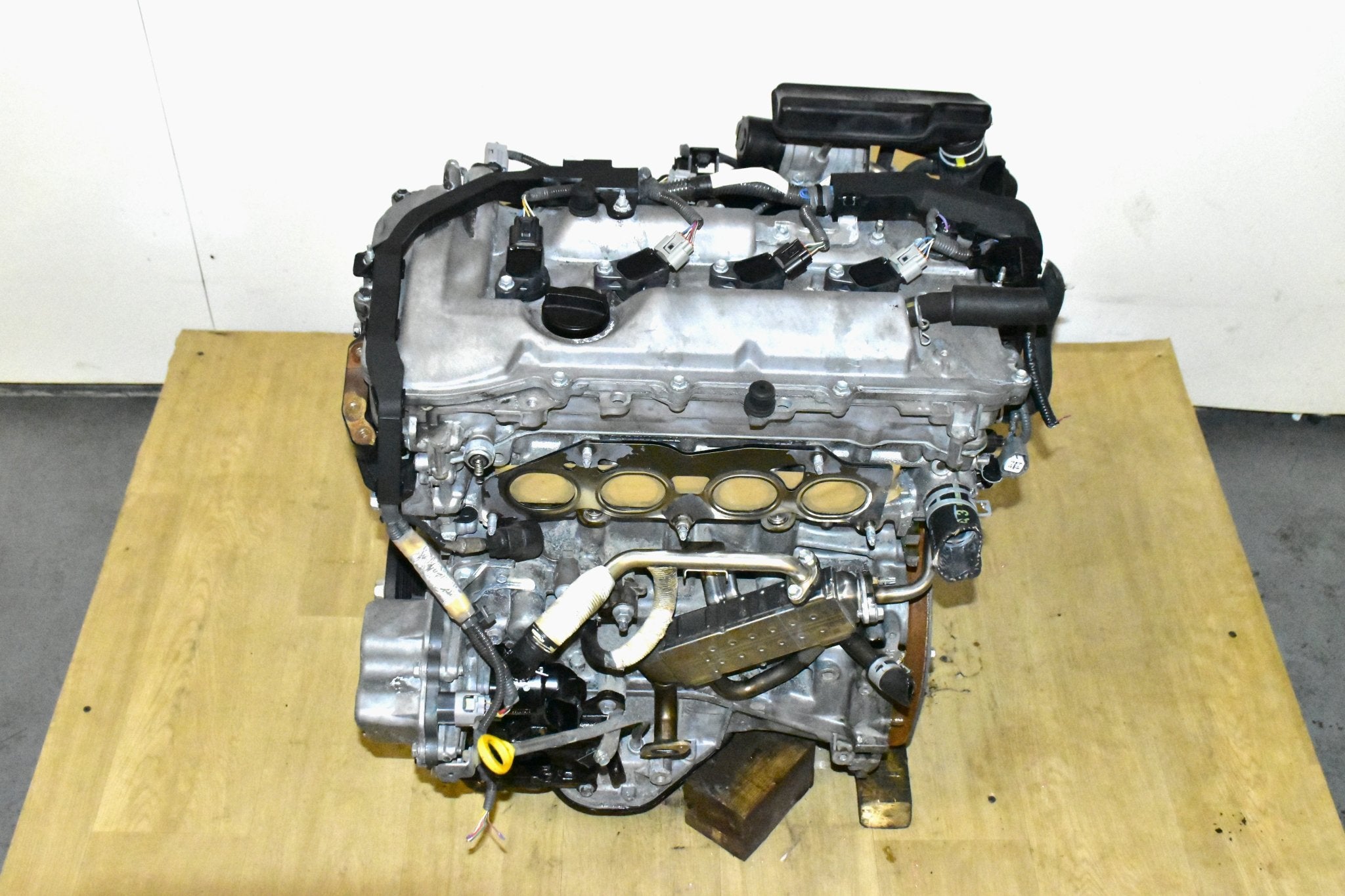
The older 2AZ-FE had a reputation for excessive oil consumption, a flaw that triggered several class-action lawsuits.
Toyota clearly learned from that misstep, because the 2AR has proven to be one of the brand’s most dependable engines to date. Owners routinely report racking up hundreds of thousands of miles with virtually no issues.
The 2AR-FE became so synonymous with reliability, it even helped reinforce the stereotype that Toyota only builds boring cars — which couldn’t be further from the truth, but that’s a discussion for another time.
In this article, we’ll take a deep dive into the Toyota 2AR-FE engine and examine its key specifications.
We’ll also explore whether the hype around its reliability holds up, what the most common issues are, and how you can fix — or better yet, avoid — them altogether.
Also Read: 5 Trucks with The Best Cold-Start Defrosters and 5 Taking Ages
2. Honda 2.4L 4-Cylinder (K24)
The Honda K24 engine, especially in Accords, CR-Vs, and Elements, is legendary for its blend of power and longevity.
Known for its smooth-revving nature and rock-solid reliability, the K24 has proven itself over millions of miles. It’s naturally aspirated, uses a chain-driven cam, and rarely suffers from internal failure, even at high mileage.
Over the span of more than twenty years, the K24 engine has gone through numerous variations, consistently proving that with the right modifications, it’s capable of producing wild amounts of power.
In factory tune, however, the highest output came from the 2015–2020 Acura TLX, which housed the K24W7, delivering 206 horsepower at 6,800 rpm and 182 lb-ft of torque at 4,500 rpm.
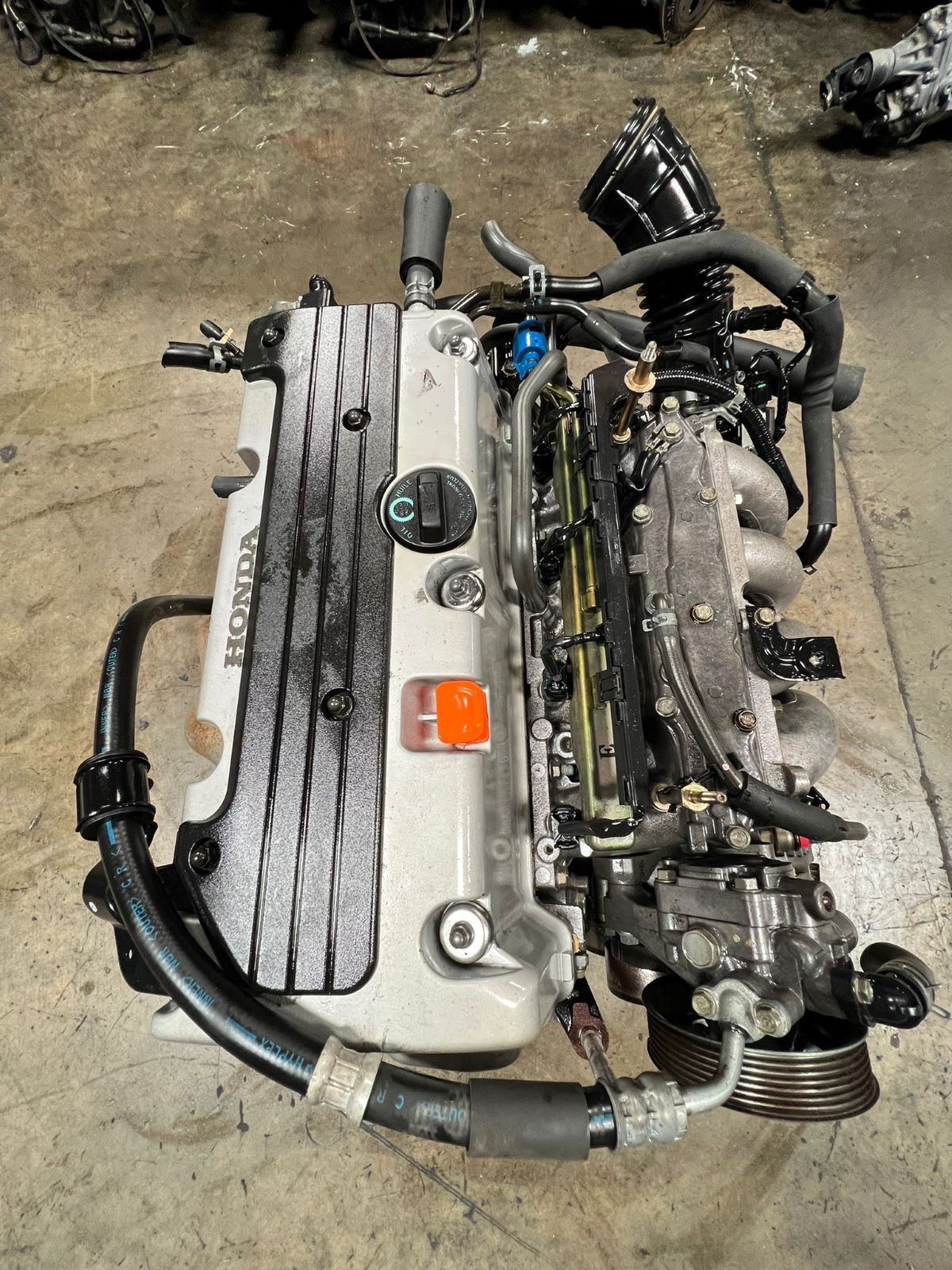
Coming in second is the 2014–2015 Honda Civic Si, equipped with the K24Z7, which made 205 hp and 174 lb-ft of torque. Rounding out the top three is the 2006–2008 Acura TSX and its K24A2, which also produced 205 hp at 7,000 rpm, though torque was slightly lower at 164 lb-ft at 4,500 rpm.
An honorable mention goes to the 2013–2015 Acura ILX, which used the same K24Z7 as the 2012–2015 Civic Si, but in this case was tuned slightly lower, generating just 201 hp at 7,000 rpm and 170 lb-ft of torque.
Yes, easily. Even with its stock internals intact, the K24 can support a turbo or supercharger without any serious work to the bottom. In factory-stock form, a turbocharged K24 can make upwards of 400–500 hp. Beyond the 500-hp mark, though, it would be in the engine’s (and owner’s) best interest to swap some of the K24’s internals for more substantial and race-oriented parts.
Pushing the K24 past 500 horsepower also brings other components into the spotlight. Most of the time, the stock transmission — manual or automatic — will need to be either reinforced or fully replaced with a stronger unit.
Delivering that much power to the ground will also demand suspension upgrades to manage traction effectively. On top of that, investing in an aftermarket ECM becomes crucial for proper fuel management and drivability — especially if you still want it to be road-friendly.
But when everything is built and tuned just right, a turbocharged K24 setup has the potential to leave even a Ferrari choking on its dust.
3. Ford 5.0L Coyote V8
Introduced in the Mustang GT and F-150, the Coyote 5.0L V8 is a modern muscle engine that defies the stereotype of V8 unreliability. Its dual overhead camshaft (DOHC) design, forged internals, and high-flow heads ensure long-lasting performance. Enthusiasts routinely report 200,000+ miles without major mechanical issues.
The 5.0L V8 engine — widely recognized as the Coyote engine — stands as a benchmark of performance and engineering excellence, firmly establishing itself as a cornerstone of Ford’s lineup since its launch in 2011.
This naturally aspirated powerhouse marked a major advancement in Ford’s engine technology, blending contemporary engineering solutions with the timeless appeal of a classic V8 — a combination that continues to win over enthusiasts.
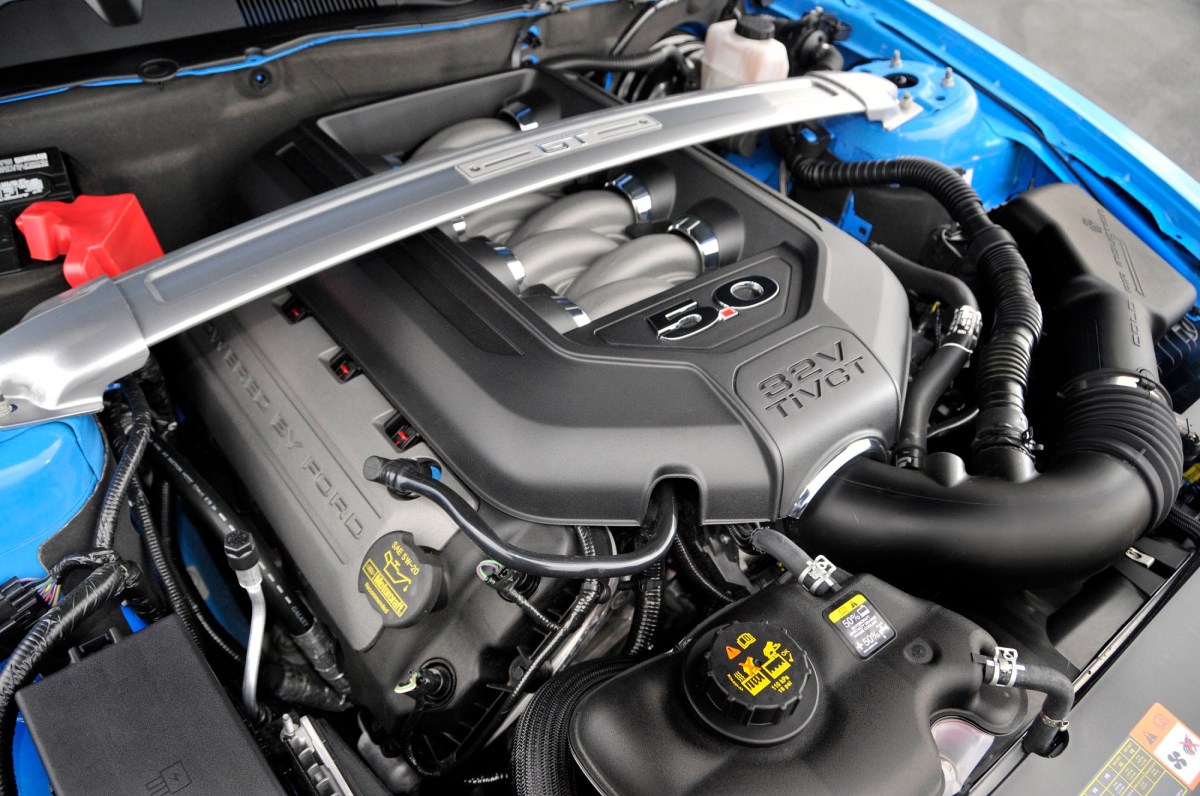
Built with an aluminum block, a DOHC (Dual Overhead Cam) configuration, and a high compression ratio, the Coyote produces strong horsepower and torque figures. Its balance of raw muscle and modern refinement has earned it praise from both hardcore performance fans and practical daily drivers.
What truly sets the Coyote apart is its ability to generate solid power throughout a broad RPM band. This flexibility not only improves the overall driving experience but also guarantees the engine stays eager and responsive — whether you’re calmly cruising or wringing it out on a racetrack.
Ford also integrated advanced tech like variable valve timing (VVT) and a carefully engineered intake manifold, both of which help maximize performance while keeping fuel efficiency in check.
4. General Motors 5.3L V8 (LS-Series)
The GM 5.3L V8, part of the LS family, powers millions of trucks, SUVs, and even performance cars. It’s known for tolerating neglect better than most and thriving with regular maintenance.
Thanks to a pushrod design and simple architecture, the engine runs smoothly well past 250,000 miles, especially in Chevrolet Silverados and Tahoes.

General Motors and Chevrolet produced the 5.3 Vortec engine for nearly twenty years, from 1999 to 2014. Spanning two generations of GM’s small-block V8 lineup, it was eventually replaced by the 5th Generation EcoTec3.
Renowned for its reliability, performance, and rugged construction, the 5.3 Vortec earned a strong reputation and widespread success. Though it was discontinued nearly a decade ago, this engine still powers thousands of Suburbans, Sierras, Tahoes, Yukons, and more on roads across the country.
This guide breaks down everything you need to know about the 5.3 Vortec. We’ll dive into its history, technical specs, vehicle applications, core engine design, overall reliability, and finally, its performance potential and most effective modifications.
Also Read: Top 5 Hybrids With the Quietest, Smoothest Switchovers
5. Subaru 2.5L Flat-4 (EJ25 – Non-Turbo)
Though the turbocharged versions of Subaru’s flat-four EJ25 engine are prone to issues, the naturally aspirated variants, especially in older Outbacks and Foresters, have proven to be remarkably durable.
With proper head gasket maintenance and cooling system care, the EJ25 can reach 200,000–300,000 miles with ease.
The Subaru EJ25 engine, a 2.5-liter flat-four powerplant, has held a notable place in the automotive world since its introduction in the late 1990s. Renowned for its signature boxer layout, the EJ25 offers a compelling blend of performance, reliability, and versatility.
One of its key advantages is its low center of gravity, which significantly improves handling and driving dynamics. Its horizontally opposed configuration ensures smooth operation and reduced vibration, making it a favorite among driving enthusiasts and practical car owners alike.
As part of Subaru’s long-standing EJ engine family, the EJ25 has been central to the brand’s identity for decades. Over the years, it has seen numerous updates and improvements that enhanced its performance and fuel efficiency. Initially developed for naturally aspirated use, the EJ25 later evolved to include turbocharged variants, broadening its appeal for those seeking more power without compromising everyday drivability.
The EJ25 has been used across a wide variety of Subaru vehicles, highlighting its adaptability. In the Subaru Legacy, where it first appeared, the engine provided a strong balance of power and refinement in both sedan and wagon configurations. In the Outback, it became a cornerstone of the model’s rugged and capable personality.
The Forester benefited from the EJ25’s proven dependability, helping it become a favorite for outdoor adventurers. The engine also played a significant role in the Subaru Impreza lineup, particularly in WRX models where turbocharging delivered thrilling performance.

Even the unique Subaru Baja pickup truck featured the EJ25, blending light-duty utility with Subaru’s signature all-wheel-drive system. In addition to these mainstream applications, the engine also appeared in various special editions and performance trims, further securing its reputation within the Subaru community.
Its ability to adapt to such a wide range of platforms, combined with its durable and well-engineered design, has made the EJ25 a reliable go-to powerplant for countless drivers. It reflects Subaru’s core values of innovation, safety, and mechanical resilience, and it continues to be held in high regard among fans of the brand.
When it comes to specifications, the EJ25 is a robust engine that performs well under various driving conditions. It’s available in both naturally aspirated and turbocharged configurations, as part of Subaru’s iconic boxer engine family. The flat-four layout not only contributes to a lower center of gravity but also offers balanced power delivery and a unique driving feel.
It has a displacement of 2.5 liters (2457 cc), with a compression ratio of 10.5:1 in naturally aspirated versions and 8.0:1 in turbocharged ones. The engine produces 165 horsepower at 5,600 RPM and 166 lb-ft of torque at 4,000 RPM in its naturally aspirated form. In turbocharged variants, output jumps to 250 horsepower at 6,000 RPM and 250 lb-ft of torque at 3,000 RPM.
Fueling the EJ25 is straightforward, as it runs on regular unleaded gasoline, helping to keep ownership costs down. It uses a multi-point fuel injection system and typically delivers EPA-estimated fuel economy of around 22 MPG in the city and 29 MPG on the highway, though actual results vary depending on the specific model and configuration.
The engine is also LEV2 (Low Emission Vehicle) compliant, reflecting Subaru’s commitment to balancing performance with environmental responsibility.
6. BMW 3.0L Inline-6 (M54)
Often referred to as one of BMW’s last “simple” engines, the M54 3.0L inline-6 found in the E46 3-Series and E39 5-Series is revered for its mechanical purity and smoothness.
Despite BMW’s reputation for complex electronics, this engine itself is robust, offering 200,000+ miles of service when maintained with high-quality oil and cooling system components.
The M54 engine is a standout inline-six developed by BMW, widely recognized for its exceptional blend of performance and sophistication. Debuting in the early 2000s, it quickly became a core component of BMW’s powertrain lineup and a reflection of the brand’s ongoing pursuit of driving engagement and engineering excellence.
As a member of BMW’s M series of engines, the M54 earned praise for its refined operation, responsive yet controllable power delivery, and maintenance requirements that are relatively straightforward when compared to today’s more complex performance engines.
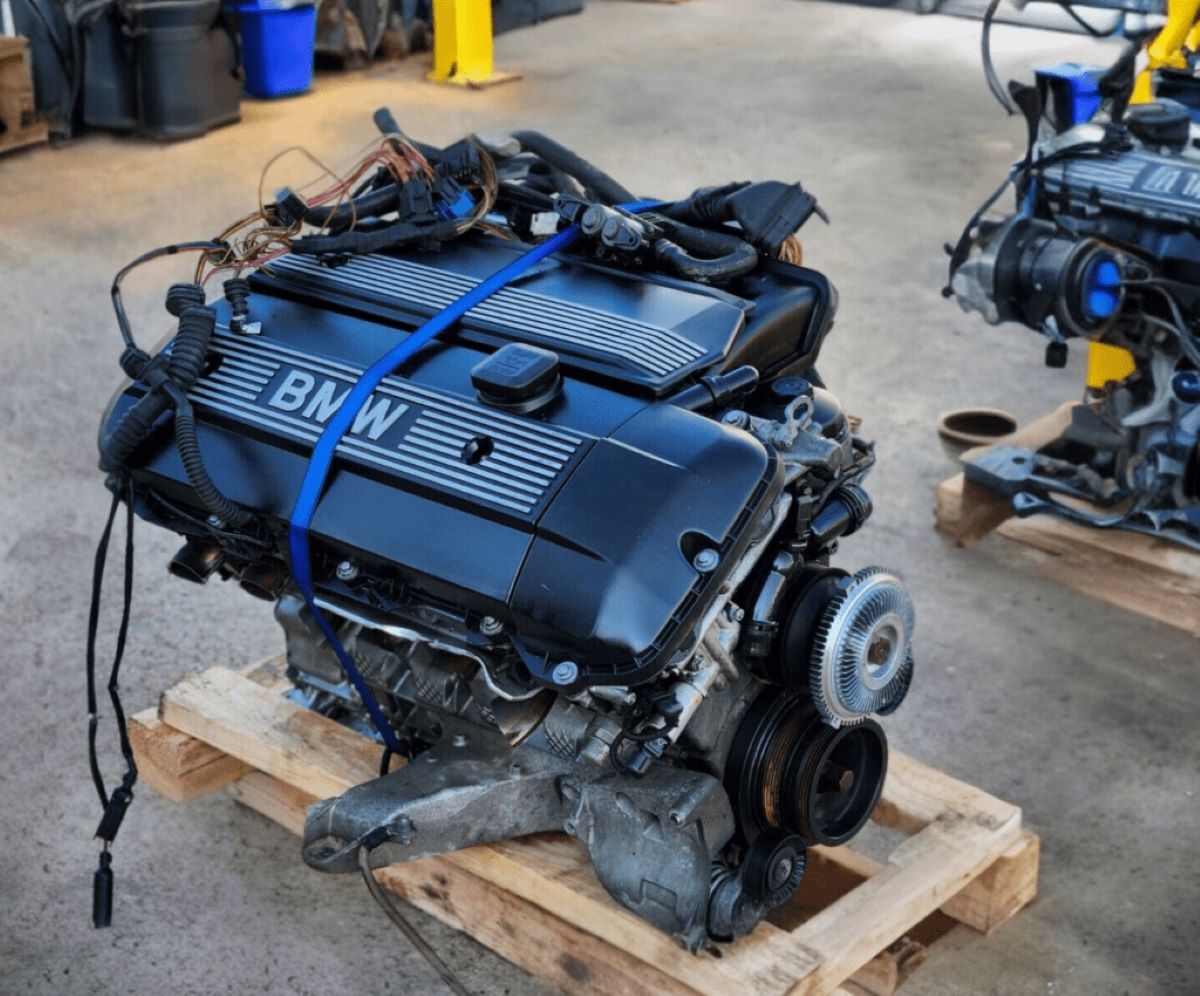
Beneath its hood, the M54 houses a 3.0-liter displacement paired with a DOHC (Double Overhead Camshaft) architecture, further enhanced by BMW’s Valvetronic variable valve timing system.
This sophisticated technology boosts both throttle responsiveness and efficiency, allowing the engine to react sharply to driver input while preserving fuel economy. With its smooth, linear powerband and consistently strong torque delivery, the M54 proves equally at home carving through winding roads or handling routine daily driving.
What truly sets the M54 apart is its ability to pair muscular performance with a composed, refined character. Under acceleration, it produces a deep, rewarding growl that performance enthusiasts can appreciate—yet during highway cruising, it remains impressively quiet and composed.
This dual nature is a significant part of its charm, making the M54 engine a favorite among drivers who value a seamless balance of power, comfort, and everyday usability.
7. Chrysler 3.6L Pentastar V6
Chrysler’s 3.6L Pentastar engine has matured into one of the more reliable V6s on the market. It powers numerous Dodge, Jeep, and Chrysler vehicles.
Despite early teething issues, updated versions are known to surpass 200,000 miles. The engine is chain-driven, offers decent performance, and doesn’t suffer from widespread oil consumption or valve train failures when cared for.
The 3.6L V6 VVT Pentastar is a 3.6-liter six-cylinder gasoline engine that made its debut at the New York Auto Show in 2009, launching officially in Chrysler, Dodge, and Jeep vehicles for the 2011 model year. Developed by Chrysler, this engine represents one of the most advanced V6 powerplants the company has produced to date.
The Pentastar has since been installed in a wide array of popular vehicles across the globe, including the Dodge Challenger, Jeep Cherokee, Jeep Wrangler, and Ram 1500. For three consecutive years, the 3.6L Pentastar V6 was ranked among the top ten engines available in the U.S. market. What follows is a comprehensive look at the Pentastar’s engineering, known issues, dependability, and long-term durability.
The new 3.6-liter V6 delivers 38% more power, consumes 11% less fuel, and is 42 pounds (19 kg) lighter than the previous 3.5-liter engine it replaced. It’s also more compact, measuring 94 mm shorter than the 3.7-liter and 34 mm shorter than the 3.5-liter V6.
The engine block is made from high-pressure die-cast aluminum and features a 60-degree V configuration between the cylinder banks. With an open-deck design, it minimizes material usage while remaining lightweight and cost-effective to manufacture. Cast iron cylinder liners are used to enhance durability over time.
Three oil jets are mounted to the block to cool the pistons—each jet cooling two pistons—to manage internal temperatures and prevent detonation under load. Inside the block are forged steel connecting rods, a nodular iron crankshaft, and cast aluminum pistons, which use low-friction rings and a reduced skirt profile to lower weight and decrease internal friction.

The lubrication system uses a chain-driven, vane-type variable displacement oil pump. Unlike older setups, this engine eliminates external brackets for accessories; the alternator, A/C compressor, and belt tensioner bolt directly to the engine block and are powered by a serpentine belt—this helps minimize vibration and noise levels significantly.
The Pentastar’s cylinder heads are made of T7 heat-treated, sand-cast aluminum and follow a 4-valve-per-cylinder design. Each head features dual overhead camshafts operating through roller finger followers paired with hydraulic lifters. The camshafts are driven by timing chains—one for each cylinder head—with “silent chain link” construction for quieter operation.
All four cams utilize torque-actuated phasers for variable valve timing. Intake valves are one-piece units made from forged, heat-resistant martensitic steel and have a diameter of 39 mm. The exhaust valves use a two-piece construction, combining a forged austenitic head with a martensitic stem; these valves measure 30 mm in diameter.
The heads also feature high-flow intake and exhaust ports, along with integrated exhaust manifolds. Atop the engine sits a lightweight composite intake manifold, which includes a 74 mm throttle body and an electronically controlled multipoint port fuel injection system.
One of the Pentastar’s key performance strengths is that 90% of its peak torque is available from 1,800 to 6,350 rpm. This wide torque band ensures excellent responsiveness and strong acceleration without needing high-octane premium gasoline.
Despite being relatively low-maintenance and undemanding when it comes to fuel quality, Pentastar engines deliver excellent fuel economy, low emissions, and refined overall performance. Their popularity extends well beyond the U.S., and they’ve become a mainstay in multiple international markets.
These engines meet a wide range of emissions standards, including Federal Tier 2 BIN 5, Ultra-Low Emissions Vehicle II (ULEV II), and Euro 6. The Pentastar is also engineered with forward compatibility in mind, with the capability to meet upcoming standards such as California’s LEV III and PZEV regulations.
8. Mazda 2.0L/2.5L SkyActiv-G Engines
Mazda’s naturally aspirated SkyActiv-G engines in the 2.0L and 2.5L flavors are known for their high thermal efficiency, good power output, and exceptional longevity.
These engines avoid direct-injection-related carbon buildup, are relatively simple to maintain, and deliver high-mileage performance without drama, commonly exceeding 250,000 miles in Mazda3 and CX-5 models.
Mazda’s Skyactiv-G engine technology marked a pivotal step forward in the automotive landscape, designed to boost fuel efficiency and lower emissions without compromising performance.
Launched in 2011, the Skyactiv-G engine debuted as part of Mazda’s comprehensive Skyactiv technology suite, which extended beyond just the powertrain to include transmissions, body structures, and chassis design. This integrated approach reflected Mazda’s ambition to reimagine vehicle engineering from the ground up, creating a more unified and efficient driving experience.
At the core of the Skyactiv-G engine’s innovation is its unusually high compression ratio—a bold move compared to traditional gasoline engines, which typically run at lower ratios to avoid engine knocking. By elevating the compression ratio, Mazda was able to harness more energy from each combustion cycle, ultimately resulting in better fuel economy.

This design has received widespread acclaim for striking a rare balance: it delivers lively, responsive performance while maintaining excellent fuel efficiency. As a result, the Skyactiv-G engine has become a mainstay in several key Mazda models, such as the Mazda3 and Mazda CX-5, contributing to their strong reputation in the compact car and crossover segments.
That said, the Skyactiv-G engine isn’t immune to problems. Like any piece of advanced engineering, it comes with its own set of challenges—issues that have sparked concern among both everyday drivers and car enthusiasts. For anyone considering a Mazda equipped with this engine, or those who already own one, being aware of these potential pitfalls is essential.
These issues can influence the day-to-day ownership experience and long-term reliability. In the sections that follow, we’ll take a closer look at the known problems linked to the Mazda Skyactiv-G engine, exploring their root causes, how they affect performance and reliability, and what can be done to address or mitigate them.
9. Nissan 3.5L V6 (VQ35DE/HR)
The Nissan VQ-series engines, especially the 3.5L VQ35DE and its updated HR version, are known for their longevity and smooth, refined operation.
Used in everything from Maximas and Altimas to 350Zs and Infiniti G35s, this engine is built to last. Routine oil changes and proper cooling system maintenance help them reach well beyond 200,000 miles.
The VQ35DE engine stands as one of Nissan’s most recognized and widely used powerplants, developed to succeed the earlier VQ30DE engine from the first generation of the VQ series.
First introduced in 2000, the VQ35DE quickly earned acclaim, winning multiple awards, including recognition as one of the best engines of the year. It carved out a reputation for strong performance, dependable engineering, and widespread versatility across Nissan and Infiniti vehicles.
This engine features a forged crankshaft and connecting rods, with the rod length measuring 144.2 mm. The pistons are molybdenum-coated, designed with a compression height of 30.1 mm.
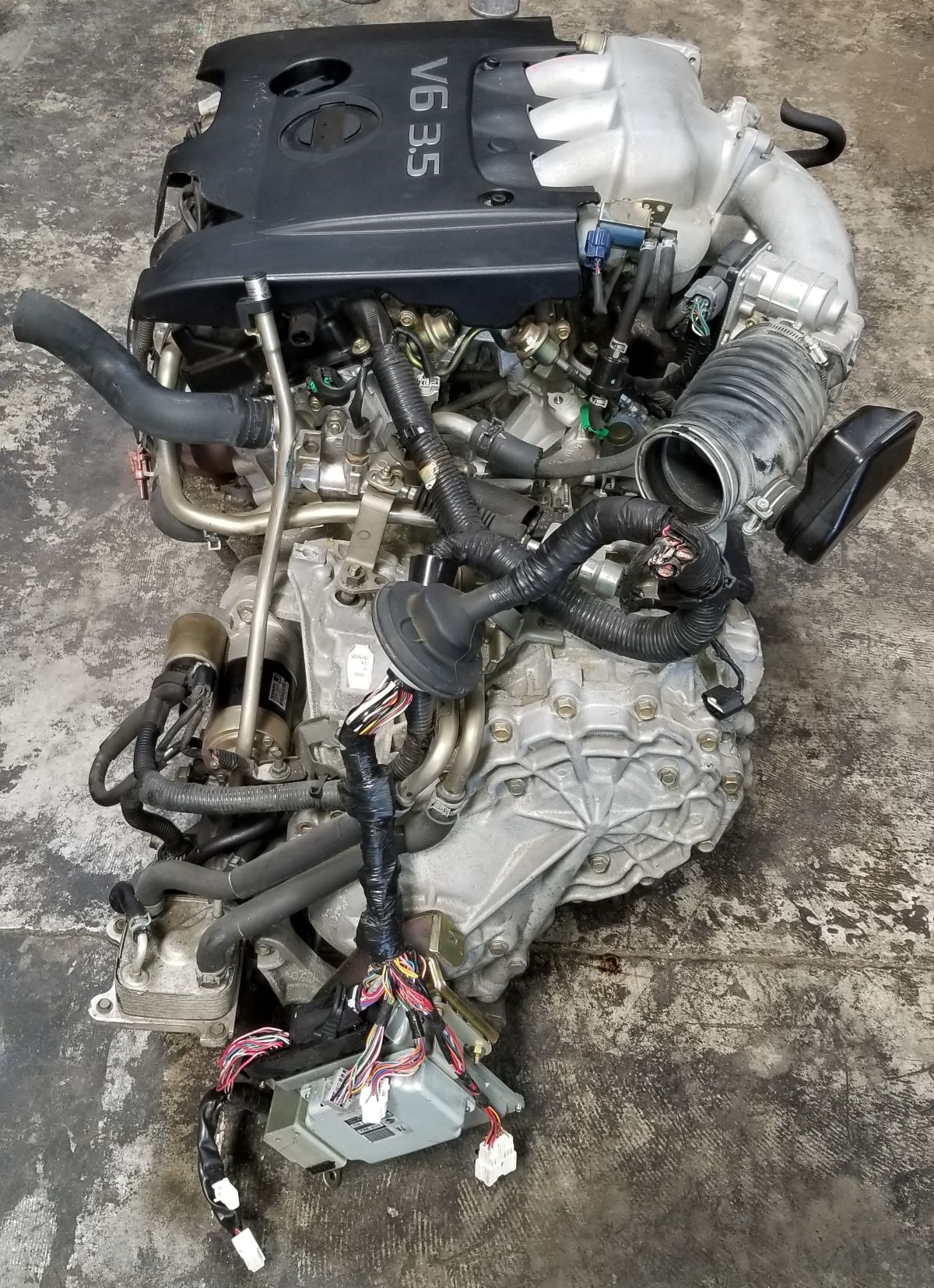
One of the hallmark characteristics of the VQ35DE is its use of Nissan’s CVTC (Continuous Variable Valve Timing Control) system on the intake camshaft, enhancing engine responsiveness. Notably, the engine runs a reliable timing chain system and omits hydraulic lifters, a design choice aimed at improving mechanical efficiency and overall power delivery.
Over time, Nissan produced second and third generations of the VQ35DE, each with specific refinements that distinguish them from the original. These updates included revised intake manifolds, modified cylinder head porting, a strengthened engine block, and softer valve springs.
These engineering tweaks not only improved durability but also led to a broader range of power output across different applications, depending on the vehicle and tuning.
Nissan also created a specialized variant of this engine, the VQ35DE Rev-Up, which was specifically developed for performance-oriented models like the Nissan 350Z 35th Anniversary Edition and select Infiniti G35 V35 models.
This version introduced CVTC on the exhaust camshaft as well, paired with a shorter intake manifold. The engine was tuned for a higher rev limit of 7000 rpm and was capable of producing up to 298 horsepower at 6400 rpm, offering a noticeably sharper performance profile.
The broader VQ engine family includes other notable variants such as the VQ20, VQ23, VQ25, VQ30, VQ37, and VQ40, reflecting Nissan’s long-standing commitment to refining this platform.
Beginning in 2007, however, Nissan gradually began replacing the VQ35DE with the newer and more advanced 3.7-liter VQ37VHR engine in various models, marking the next step in the evolution of their V6 performance line.
10. Lexus/Toyota 4.3L V8 (3UZ-FE)
A staple in Lexus models like the LS430 and SC430, the 3UZ-FE is an overbuilt V8 known for its ultra-smooth operation and rock-solid reliability.
It features an aluminum block and heads, dual overhead cams, and variable valve timing. With proper maintenance, many 3UZ-FE engines have surpassed 300,000 miles with original internals.
The 3UZ-FE, much like the 1UZ-FE, features a dual overhead camshaft (DOHC) design with four valves per cylinder, a layout optimized for power and efficiency. Thanks to the increase in displacement and continual improvements in engine technology, the 3UZ-FE produces around 290 horsepower and 441 Nm of torque, marking a clear performance boost over earlier UZ engines.
Among its key advancements, the engine incorporates Variable Valve Timing with intelligence (VVT-i) on both the intake and exhaust camshafts. This addition allows for improved fuel economy and enhanced power delivery throughout the entire RPM range. The 3UZ-FE also includes an electronic throttle control system, known as “ETCS-i,” which provides more precise throttle response.
Aside from its larger displacement, the 3UZ remains fundamentally similar to the 1UZ. It retains the 90-degree V8 aluminum engine block and aluminum DOHC cylinder heads. It operates with 32 valves—four per cylinder—and does not use hydraulic lifters, meaning periodic valve adjustments are required.
All other UZ engines began with basic configurations and were later upgraded with features like VVT-i. The 3UZ-FE, however, was introduced with all the modern upgrades right out of the gate. This was primarily due to its newer development timeline, making it unreasonable for Toyota not to include VVT-i from the start.
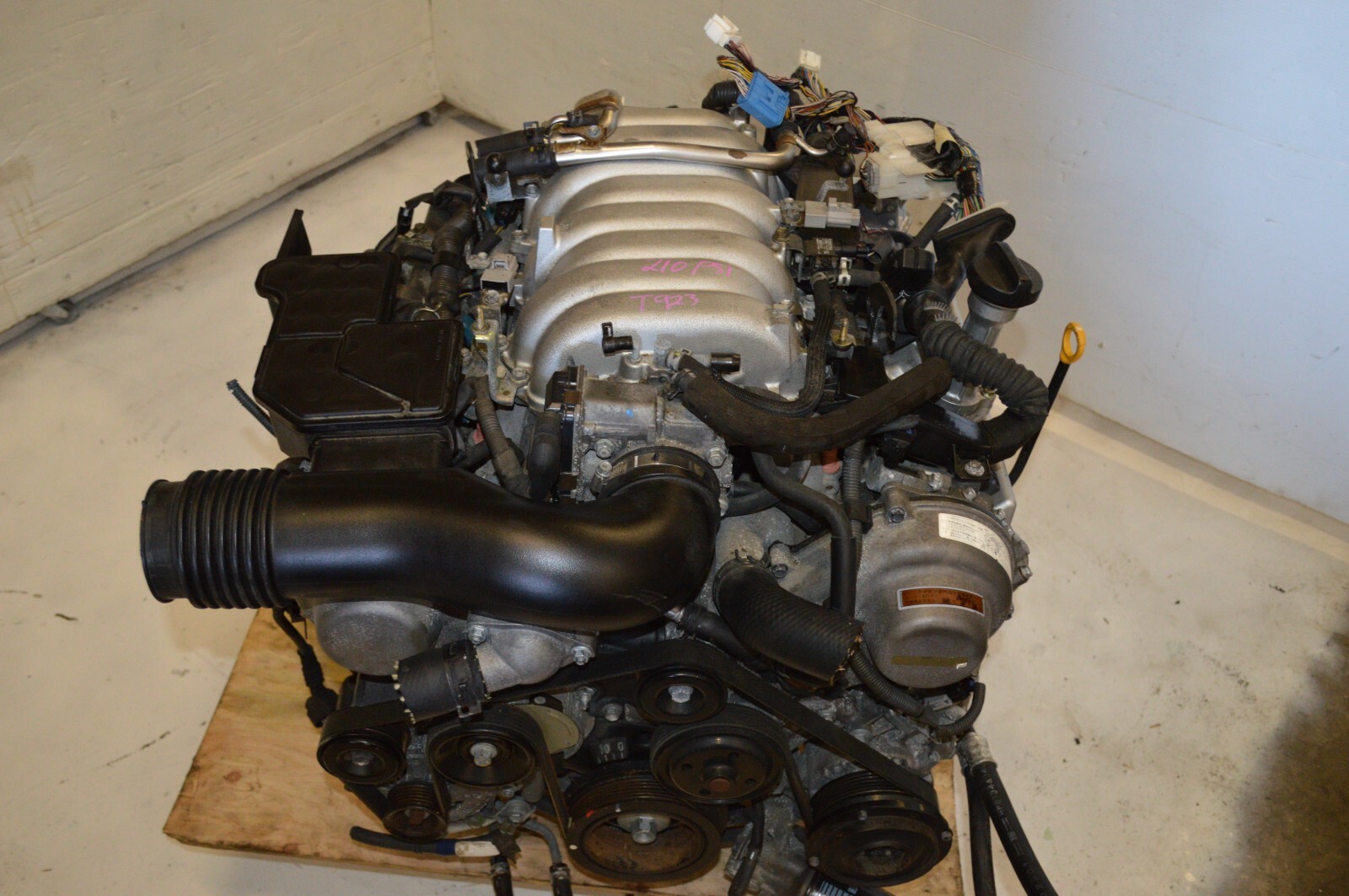
The 3UZ-FE was produced between 2000 and 2010. Its specifications include an aluminum cylinder block and heads, DOHC with four valves per cylinder, a bore of 91 mm, a stroke of 82.5 mm, a 10.5:1 compression ratio, and a displacement of 4292 cc.
Like the 1UZ, the 3UZ-FE was engineered with luxury in mind and found its home in several high-end Toyota and Lexus models. These included the Lexus GS430, LS430, and SC430, as well as the Toyota Crown Majesta and Soarer.
Over time, the 3UZ-FE saw a series of minor upgrades that slightly improved horsepower, torque, and fuel economy. The first iteration delivered 282 horsepower at 5,600 rpm and 307 lb-ft of torque at 3,500 rpm.
Later tweaks raised those figures to 290 horsepower and 320 lb-ft. The final revisions pushed output even further to 304 horsepower and 325 lb-ft of torque, still at 5,600 and 3,400 rpm respectively. These changes were largely the result of ECU recalibration rather than any physical component upgrades.
Despite its close relationship to the 1UZ, there are a few notable differences in the 3UZ. It features a larger bore and thinner cylinder sleeves. The pistons are both lighter and larger, designed to accommodate the wider bore.
Additionally, improved coolant passages help reduce combustion chamber temperatures. The 3UZ also benefits from modern tech such as Lexus’s electronic throttle body. For a full breakdown of the differences between the 1UZ and 3UZ, LexusV8engines.co.va provides a detailed comparison.
For performance enthusiasts, the real question is what the 3UZ-FE can do when modified. Can it be transformed from a refined luxury V8 into a formidable street performer? The answer is a mix of good and bad news. On the positive side, its design is nearly identical to the 1UZ, meaning it shares the same tuning potential
However, its ability to handle serious power gains is restricted by the limitations of the stock block. So while you can definitely coax more performance out of it, doing so safely and reliably will require thoughtful upgrades and possibly internal engine reinforcement.
The engines listed above are more than just powerplants they’re long-term companions that reward consistent maintenance with exceptional longevity.
Whether you’re driving a refined luxury sedan, a trusty family SUV, or a hard-working pickup truck, these gasoline engines prove that durability is still alive and well in the automotive world.

